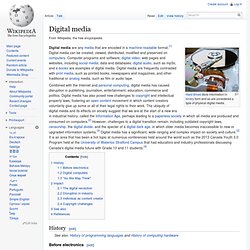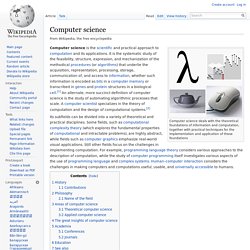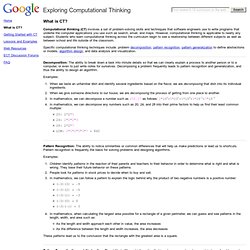

Information technology. Information technology (IT) is the application of computers and telecommunications equipment to store, retrieve, transmit and manipulate data,[1] often in the context of a business or other enterprise.[2] The term is commonly used as a synonym for computers and computer networks, but it also encompasses other information distribution technologies such as television and telephones.

Several industries are associated with information technology, including computer hardware, software, electronics, semiconductors, internet, telecom equipment, e-commerce and computer services.[3][a] Humans have been storing, retrieving, manipulating and communicating information since the Sumerians in Mesopotamia developed writing in about 3000 BC,[5] but the term information technology in its modern sense first appeared in a 1958 article published in the Harvard Business Review; authors Harold J. Leavitt and Thomas L. Whisler commented that "the new technology does not yet have a single established name. Digital media. Hard drives store information in binary form and so are considered a type of physical digital media.

Combined with the Internet and personal computing, digital media has caused disruption in publishing, journalism, entertainment, education, commerce and politics. Digital media has also posed new challenges to copyright and intellectual property laws, fostering an open content movement in which content creators voluntarily give up some or all of their legal rights to their work. History[edit] Before electronics[edit] Analog computers, such as Babbage's Difference Engine, use physical, mechanical parts and actions to control operations Machine-readable media predates the Internet, modern computers and electronics.
Digital computers[edit] Digital codes, like binary, can be changed without reconfiguring mechanical parts "As We May Think"[edit] The owner of the memex, let us say, is interested in the origin and properties of the bow and arrow. Impact[edit] The digital revolution[edit] Computer science. Computer science deals with the theoretical foundations of information and computation, together with practical techniques for the implementation and application of these foundations History[edit] The earliest foundations of what would become computer science predate the invention of the modern digital computer.

Machines for calculating fixed numerical tasks such as the abacus have existed since antiquity, aiding in computations such as multiplication and division. Further, algorithms for performing computations have existed since antiquity, even before sophisticated computing equipment were created. The ancient Sanskrit treatise Shulba Sutras, or "Rules of the Chord", is a book of algorithms written in 800 BCE for constructing geometric objects like altars using a peg and chord, an early precursor of the modern field of computational geometry.
Time has seen significant improvements in the usability and effectiveness of computing technology. Contributions[edit] These contributions include: Exploring Computational Thinking. Google is committed to promoting computational thinking throughout the K-12 curriculum to support student learning and expose everyone to this 21st century skill.

What is Computational Thinking? Computational thinking (CT) involves a set of problem-solving skills and techniques that software engineers use to write programs that underlie the computer applications you use such as search, email, and maps. Here are specific techniques. Decomposition: When we taste an unfamiliar dish and identify several ingredients based on the flavor, we are decomposing that dish into its individual ingredients. Pattern Recognition: People look for patterns in stock prices to decide when to buy and sell. CT Models in K-12 Curriculum Several committed teacher-contributors in collaboration with Google engineers have put together classroom-ready lessons and examples showing how educators can incorporate CT into the K-12 curriculum.
Resources for Educators Web Resources. Exploring Computational Thinking. Computational thinking (CT) involves a set of problem-solving skills and techniques that software engineers use to write programs that underlie the computer applications you use such as search, email, and maps.

However, computational thinking is applicable to nearly any subject. Students who learn computational thinking across the curriculum begin to see a relationship between different subjects as well as between school and life outside of the classroom. Specific computational thinking techniques include: problem decomposition, pattern recognition, pattern generalization to define abstractions or models, algorithm design, and data analysis and visualization. Decomposition: The ability to break down a task into minute details so that we can clearly explain a process to another person or to a computer, or even to just write notes for ourselves.
Decomposing a problem frequently leads to pattern recognition and generalization, and thus the ability to design an algorithm. Examples: